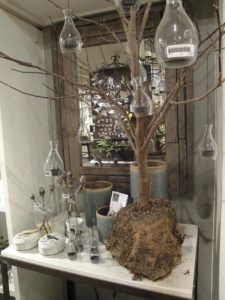A Uniform Approach
I’ve been shopping in stores many times when another customer has asked me a question meant for a store employee to answer. Since I’m not in the habit of wearing store logos, customers are obviously having trouble identifying employees, and this is a problem that can easily be avoided.
Uniforms for your employees can make it easier for customers to shop your store, enabling customers to spend more money. Uniforms will allow your customers to seek out answers to questions they may have. And, sometimes, it’s just nice to know there are knowledgeable people around at all times in case customers have questions.
According to Van Dyne Crotty, a supplier of uniforms, in a recent customer perception survey conducted by J.D. Power and Associates respondents had two common reactions to uniforms. “First, they preferred uniforms because it made it easy to identify who would be able to help them. Second, respondents indicate positive work ethic associations when they see employees in uniform… Respondents said they ‘want to be able to identify who can help them and prefer a clean, consistent image that does not necessarily project a traditional uniformed image.'” Respondents also had more confidence and trust in employees wearing uniforms, and they felt product and service quality was likely to be higher when employees wear uniforms.
Types Of Uniforms
You can choose to either buy or rent uniforms. According to www.entrepreneur.com, buying is generally the less expensive option. So, not surprisingly, about 80 percent of uniforms are bought rather than rented. However, a major benefit of renting uniforms is that the uniform rental firm supplies and cleans uniforms, so this may work best for companies with employees who will not wash their uniforms on a regular basis.
Regardless of the purchase or rent decision, the main choice about uniforms is appearance. Presently, garden center employees throughout the country are wearing an array of uniforms, some employers provide shirts for their employees, some provide aprons, some only have a general dress code. It seems the majority of garden centers are sticking with either the standard logo-embroidered shirts (polo style or T-shirts) or aprons worn with a designated color pants or shorts.
The casual shirt or apron may be a good idea; according to the customer perception survey, “Consumers are indicating a growing preference for slightly more casual attire in typically formal settings; they also seem to be indicating a preference to somewhat dressier styles in settings where less professional attire is common.”
The survey also showed that the “choice of the most popular and appropriate uniform style could ‘dramatically’ influence a buyer’s choice of service provider when comparing two otherwise similar providers.” The survey gave respondents a choice of 12 uniforms that included such styles as executive wear, embroidered polo shirts, smocks, aprons and work shirt/pants. For most consumers, seeing their preferred style (versus no style at all) increased the likelihood to purchase.
Advertising
One very important reason behind uniforms is to make shopping easier for your customers, but with the increasing need for independent garden centers to advertise and market, uniforms can become another marketing tool. Think of all the places you visit before or after work and how many T-shirts you read every day just walking down the street or through the mall. Your employees can be walking billboards.
The uniforms you use can also promote your image. Once you’ve decided what shirts or aprons to provide your employees, stick with it. Your store could become well known by these uniforms. If your employees’ T-shirts are yellow, make sure they are always yellow; don’t have a few yellow shirts, a few red and a couple blue. Everyone in the same color will make more of an impact, and when your customer sees that yellow shirt at the grocery store or library, she’ll remember she needs to stop by your store.
According to Van Dyne Crotty, the study concluded: “Any business organization that in some way interacts with other business organizations or end customers may benefit by considering uniforms for employees. Businesses should consider uniforms not just as a ‘uniform’ clothing style but also as an opportunity to advance an organization’s brand image and upgrade the professional image of an organization’s employees… ”















 Videos
Videos





